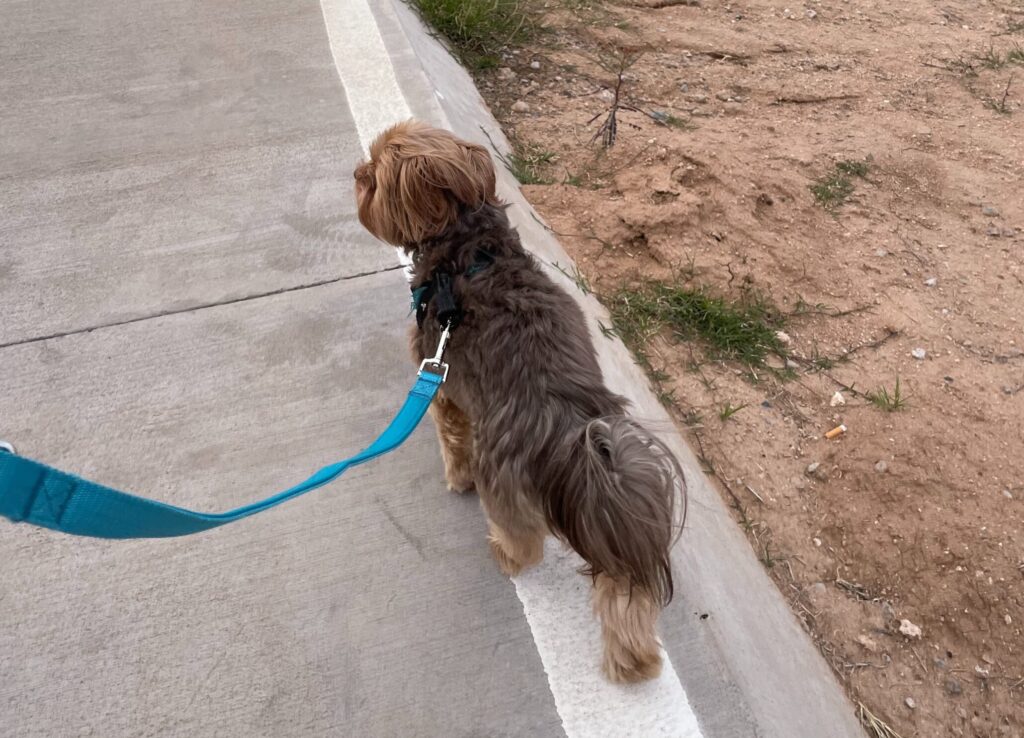Effective Leash Training Methods
Training your dog to walk on a leash is a valuable skill that enhances their safety and strengthens your bond. Whether a puppy or an adult dog, teaching leash manners and recall commands are essential to ensure they are building good habits.
The Importance of Leash Training
Training dogs to walk on a leash is crucial for their safety and your control in various situations. It’s equally vital for off-leash control, ensuring they respond to commands and stay by your side. Proper leash manners empower your dog to enjoy walks while maintaining a sense of security. For dog owners, teaching dogs to walk nicely on a leash can also be very rewarding.
Before we get into the tips, we have a bit of advice on the equipment you should consider using to aid in successful training. Make sure your puppy or dog has a well-fitting collar or harness to prevent them from slipping out, as well as a suitable leash. Leash length will vary based on the breed and age of your dog. Typically recommended leash lengths are between 4-feet and 6-feet long. For most dogs, a 6-foot leash is an ideal length; long enough to give them some freedom, but short enough for you to maintain control. We also recommend that you utilize a traditional leash instead of a retractable leash, which is more difficult to control your pet and can easily snap and cause injury.
A great way to help your pup get used to wearing a collar/harness and leash is to put both on for short periods of time in the house and during playtime. During this exercise, give him/her small treats and praise so they learn to love collar-and-leash time since it’s now associated with food and fun.
Tips for Effective Leash Training Methods
- Loose Leash Walking Techniques: Begin by acclimating your dog to the leash indoors. Use positive reinforcement with treats or verbal praise whenever they show positive leash behavior, leaving slack in the leash. Gradually introduce distractions while practicing loose leash walking techniques, rewarding them for walking calmly by your side.
- Use Positive Reinforcement Leash Training: Incorporate marker sounds or training treats to reinforce good behavior. Consistency and patience are key. Encourage desired behavior by redirecting attention and rewarding them when they comply.
- Managing Distractions: During outdoor walks, stay alert and anticipate distractions. Redirect your dog’s attention with the marker sound or treats if they become distracted. Maintain control without resorting to force or pulling on the leash; this goes back to point number one and that loose leash technique.
- Short Training Sessions: Keep training sessions short and positive. Dogs have varying attention spans, so frequent short sessions are more effective than long, exhausting ones. End on a positive note to keep your dog engaged and motivated for the next session.
- Vary Walking Routes: Switch up walking routes to expose your dog to new environments. This helps desensitize them to different stimuli, reducing anxiety and improving their adaptability on walks.
Bonus Off-Leash Training Advice
- Consistent Commands: Reinforce commands like “Sit-Stay-Come” during walks. Practice these commands in different environments to help your dog associate them with consistent behaviors, enhancing off-leash control. This will help in mastering dog recall.
- Controlled Settings: Ensure your dog masters on-leash behavior before attempting off-leash training. Use fenced and controlled environments for off-leash practice. Dog parks (especially empty ones at first) can be great for supervised off-leash practice, always prioritizing safety and responsiveness to commands. Work on voice commands, maintaining voice control, and reinforcing recall commands.
Remember, consistency and positive reinforcement are key elements in successful leash training. Tailor your training approach to your dog’s pace and temperament. Celebrate small victories and gradually progress to more challenging scenarios, ensuring both you and your dog enjoy the learning process.
These tips aim to help you navigate leash training effectively, ensuring enjoyable walks and a stronger bond with your furry companion. Happy training and walking!


